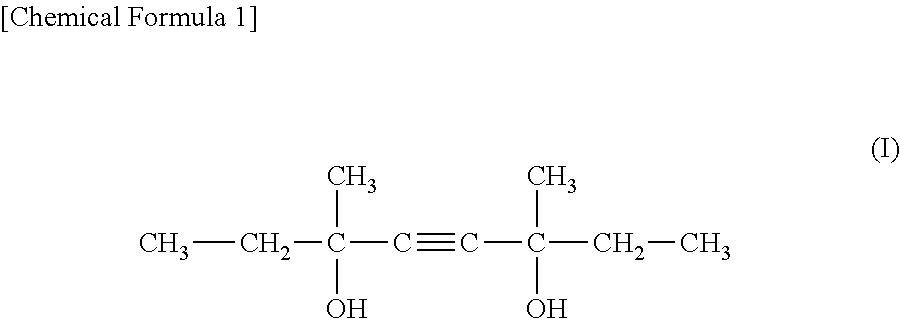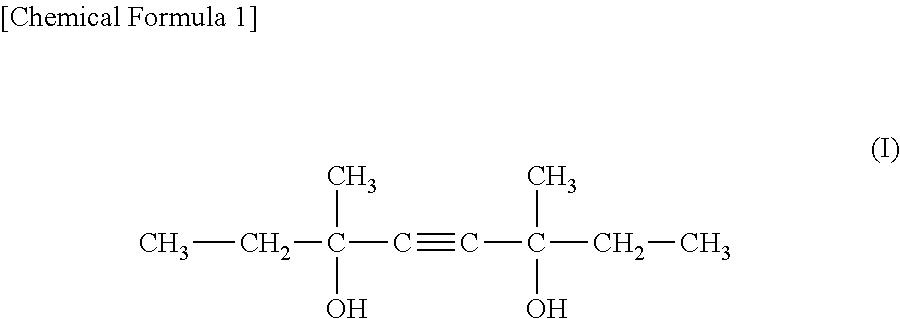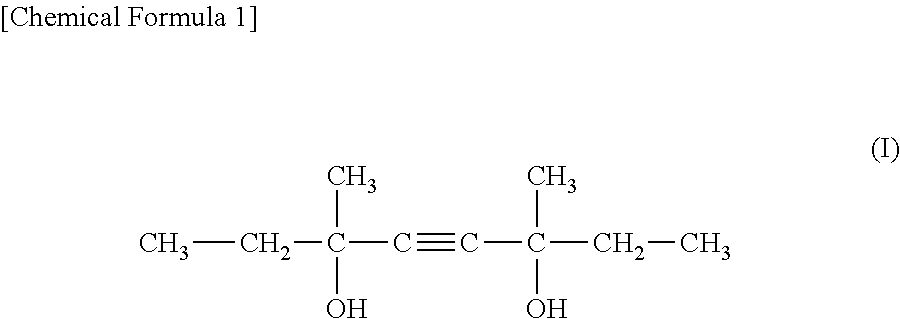Ink for inkjet textile printing and dyeing method
a technology for textile printing and inkjet printing, applied in the direction of dyeing process, ink, coating, etc., can solve the problems of clogging, ejection failure, likely to cause clogging, etc., and achieve the effect of stable recording performance, high print density, and stable ink storage stability
- Summary
- Abstract
- Description
- Claims
- Application Information
AI Technical Summary
Benefits of technology
Problems solved by technology
Method used
Image
Examples
working example 1
[0054]A mixture including 100 parts of a red disperse dye dry cake (C.I.Disperse Red 92), 100 parts of “Joncryl 63” (30% aqueous solution of resin of ammonia neutralized styrene-(meth)acrylic acid-based copolymer having a weight-average molecular weight of 12,500 and an acid value of 213) as an anionic high-molecular dispersant, and 300 parts of water was prepared. The mixture was pulverized for 35 hours in a sand mill using 1,500 parts of zircon beads with a diameter of 0.4 mm to provide a dispersion.
[0055]To 40 parts of this dispersion, 35 parts of glycerin, 1 part of “Surfynol 82” (manufactured by Nissin Chemical Industry Co., Ltd.), which is an acetylene glycol-based compound expressed by Chemical Formula (I), and 24 parts of water were added, and thus ink in which the dye concentration was adjusted to 8% was produced. The average particle diameter of the dye was 100 nm.
working examples 2 to 4
[0056]Inks of Working Examples 2 to 4 were produced by adjusting the dye concentrations to 8% in the same manner as in Working Example 1, except that the amount of “Surfynol 82” was changed to 0.2 parts, 1.5 parts, and 1.8 parts. The average particle diameter of the dye was 100 nm.
working example 5
[0057]A dispersion was obtained by performing the pulverization in the same manner as in Working Example 1, except that 100 parts of a yellow disperse dye dry cake (C.I.Disperse Yellow 65) was used instead of the red disperse dye dry cake. To 20 parts of this dispersion, 35 parts of glycerin, 1 part of “Surfynol 82”, and 44 parts of water were added, and thus ink in which the dye concentration was adjusted to 4% was produced. The average particle diameter of the dye was 90 nm.
PUM
| Property | Measurement | Unit |
|---|---|---|
| temperature | aaaaa | aaaaa |
| acid value | aaaaa | aaaaa |
| acid value | aaaaa | aaaaa |
Abstract
Description
Claims
Application Information
 Login to View More
Login to View More - R&D
- Intellectual Property
- Life Sciences
- Materials
- Tech Scout
- Unparalleled Data Quality
- Higher Quality Content
- 60% Fewer Hallucinations
Browse by: Latest US Patents, China's latest patents, Technical Efficacy Thesaurus, Application Domain, Technology Topic, Popular Technical Reports.
© 2025 PatSnap. All rights reserved.Legal|Privacy policy|Modern Slavery Act Transparency Statement|Sitemap|About US| Contact US: help@patsnap.com



